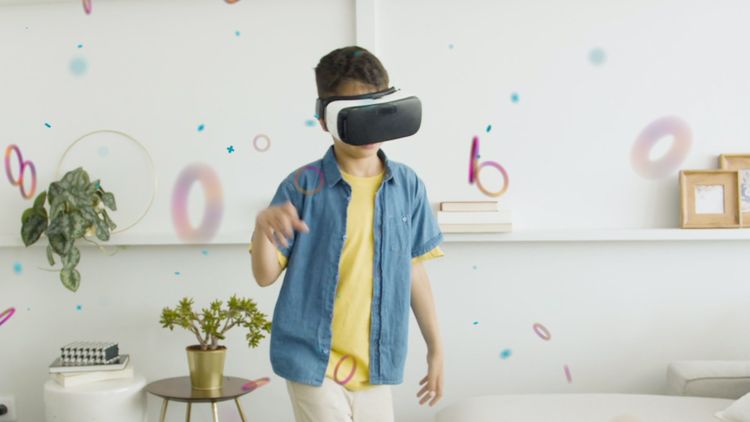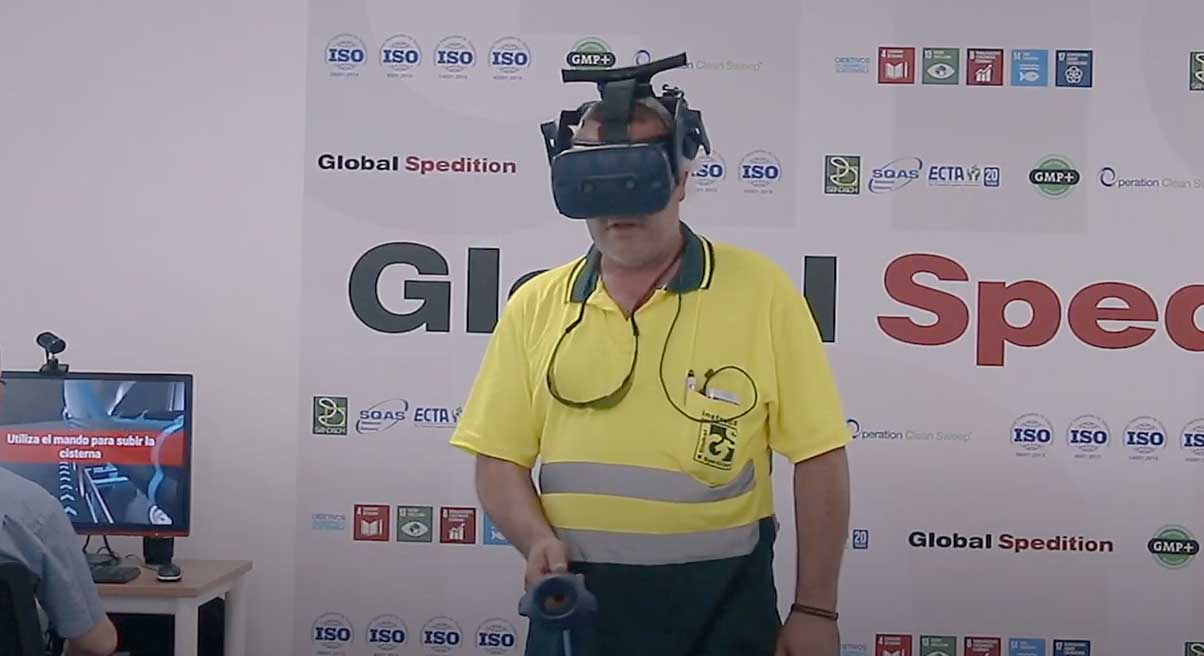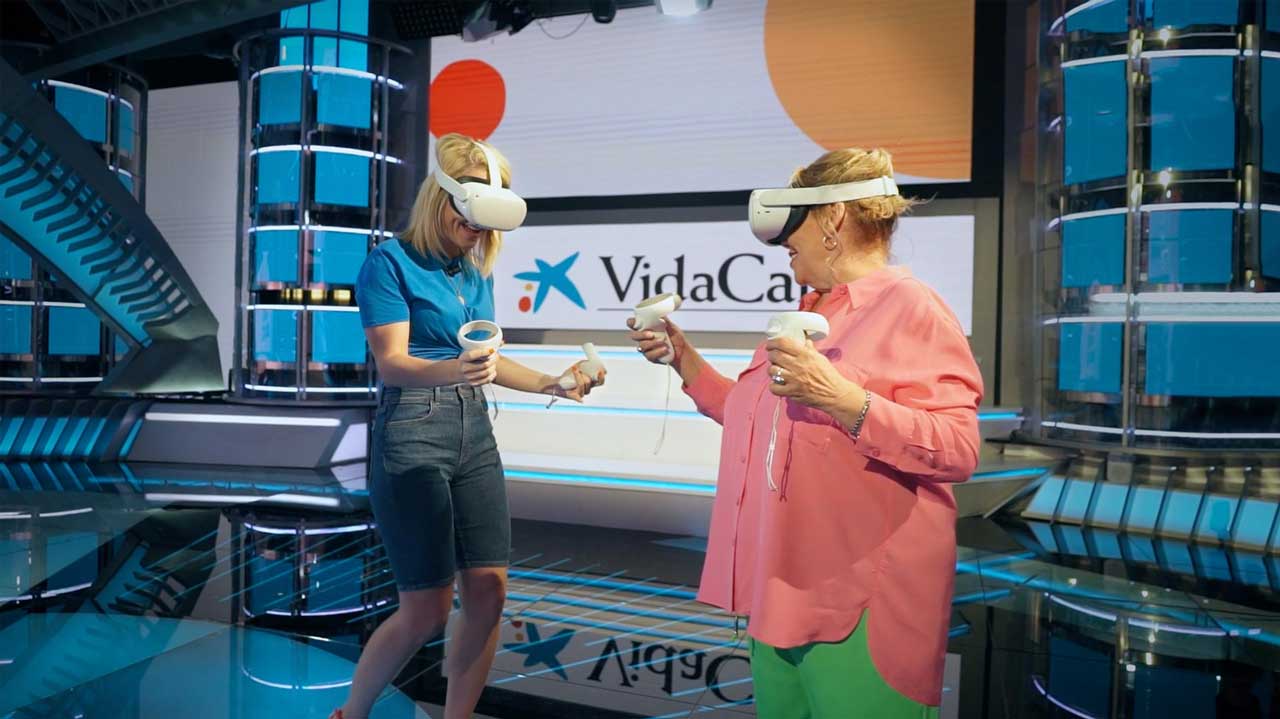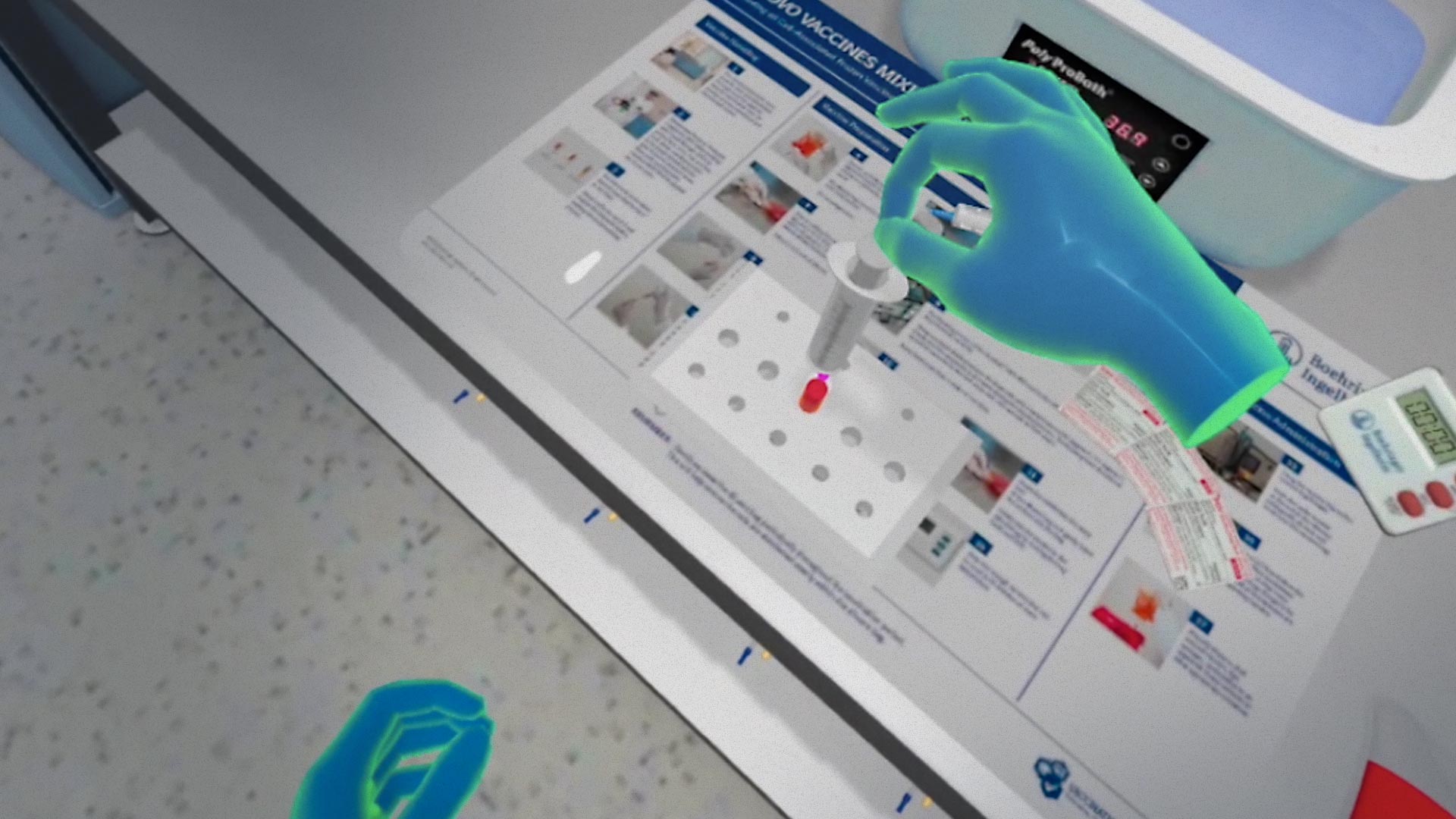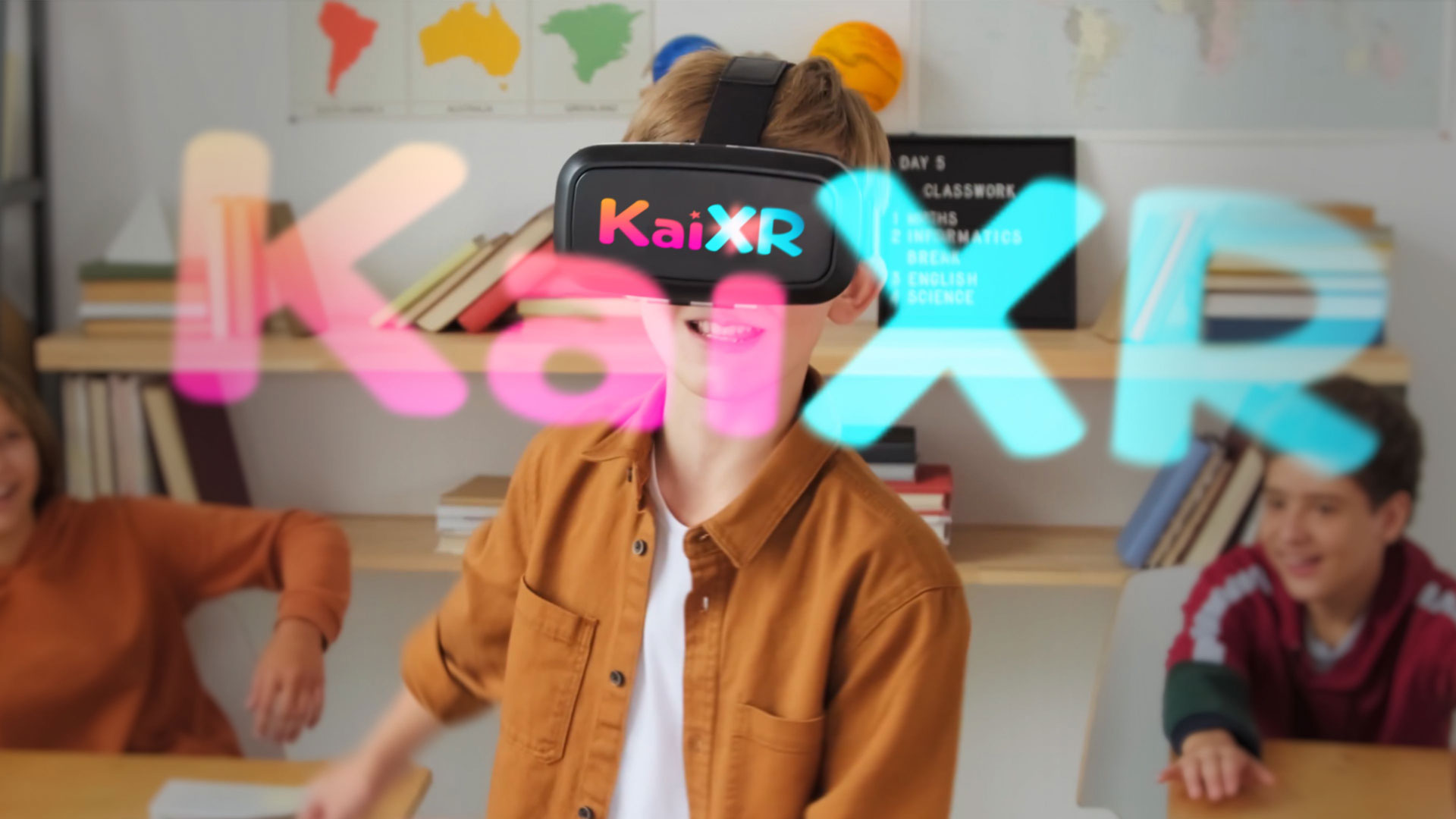Virtual Reality: examples and applications
What is Virtual Reality and what are its applications?
The Virtual Reality is the technology capable of immersing us in completely digital alternative worlds, where we, the users, decide where to focus our attention. 3D environments in which our senses cease to perceive the real world thanks to total immersion through Virtual Reality glasses (HMD or Head-Mounted Display) and its accessories. The different controllers, gloves, headphones and haptic suits not only allow us to see, hear and feel these new digital experiences, but also offer us great freedom of movement to enjoy the virtual universe.
Differences between Virtual Reality, Augmented Reality and Mixed Reality
Virtual Reality is just one of the immersive solutions encompassed within the Extended Reality. A series of technologies to which Augmented Reality and Mixed Reality also belong. Their origins and software are different, but their objective is similar: eliminating the barriers between the real and the virtual.
While Virtual Reality transports users into totally artificial 3D spaces, in the Augmented Reality the real world is still shown, but with virtual elements that complement and enrich it. On the other hand, the Mixed Reality is the result of the combination of the two previous technologies, where users can interact with these digital elements superimposed on the physical world.
Virtual Reality Applications
Virtual Reality has become a revolutionary technology that is transforming the way we experience the digital world. Thanks to its ability to immerse us in virtual environments, it gives us the opportunity to explore remote places, interact with three-dimensional objects and live immersive experiences that before we could only imagine in science fiction.
In this context, Virtual Reality applications have gained unprecedented relevance, spanning a wide range of industries and offering amazing potential to enrich our lives and revolutionize the way businesses operate. In the following, we will explore some of these applicationsdiscovering how Virtual Reality is changing the game in different fields and unleashing its full creative and innovative potential.
→ At Imascono we offer the best service of Virtual Reality for Business
Application in the education sector
With the entry of Virtual Reality in educational programs, it changes forever the way children and students learn about the world. With this technology they can visit any country, discover marine fauna, travel to the past, the future or other planets, all without leaving the classroom. Thus allowing them to live in first person new situations, understand more complicated academic concepts in a simple way, and enhance the creativity and imagination of schoolchildren.
Among the educational projects based on Virtual Reality that are already under way is the Kai XR platform. Where through some Virtual Reality glasses every child can live different educational experiencesDiscover the pyramids of Egypt, visit the top of a windmill and even watch a rocket launch being prepared as a member of NASA.
Kai XR Virtual Reality project developed by Imascono in the field of education.
2. Application in the business and industry 4.0 sector.
If there is one application of Virtual Reality that revolutionizes the industrial sector is the possibility of autonomously training in complex and/or dangerous tasks through the use of controlled 3D simulationsThe virtual reality can also be developed to have an impact in reality, without the need to allocate extra resources such as trainers or the machinery itself for this purpose. However, Virtual Reality can also be developed to have an impact on reality.
Its immersive capability combined with the technologies of the Internet of Things (IoT) offers the possibility to remotely manage a wide variety of devices such as drones or robots for work in high-risk or limited-access environments, with 360º vision, increased safety, and a more real and humanized interaction.
Among the solutions already developed in this area we find the entire line of Virtual Training. Customized trainings in Virtual Reality implemented by companies in different industrial sectors such as professional training of workers in the following sectors Global Spedition or the presentation of the new industrial machinery of Boehringer Ingelheim.
If the entry of websites revolutionized the retail sector with the advent of e-commerce, the next great technological leap was made by the virtual experiences. Thanks to advances in Virtual Reality, the shopping experience is transformed with the new more intuitive and immersive online storeswhere a whole series of actions can be carried out as if it were a physical store, but from the comfort of the home. The Virtual Reality also allows to recreate showrooms and even workshops, where users can immerse themselves in the process and make their own customized products as if it were a video game.
In addition, these technologies not only allow you to see the products, but also to test them in the field. gamified experiences. With simulations where customers drive the latest model of car or enjoy cooking in an interactive virtual house as developed by Lèkuèwhere you can see its entire catalog of kitchen utensils.
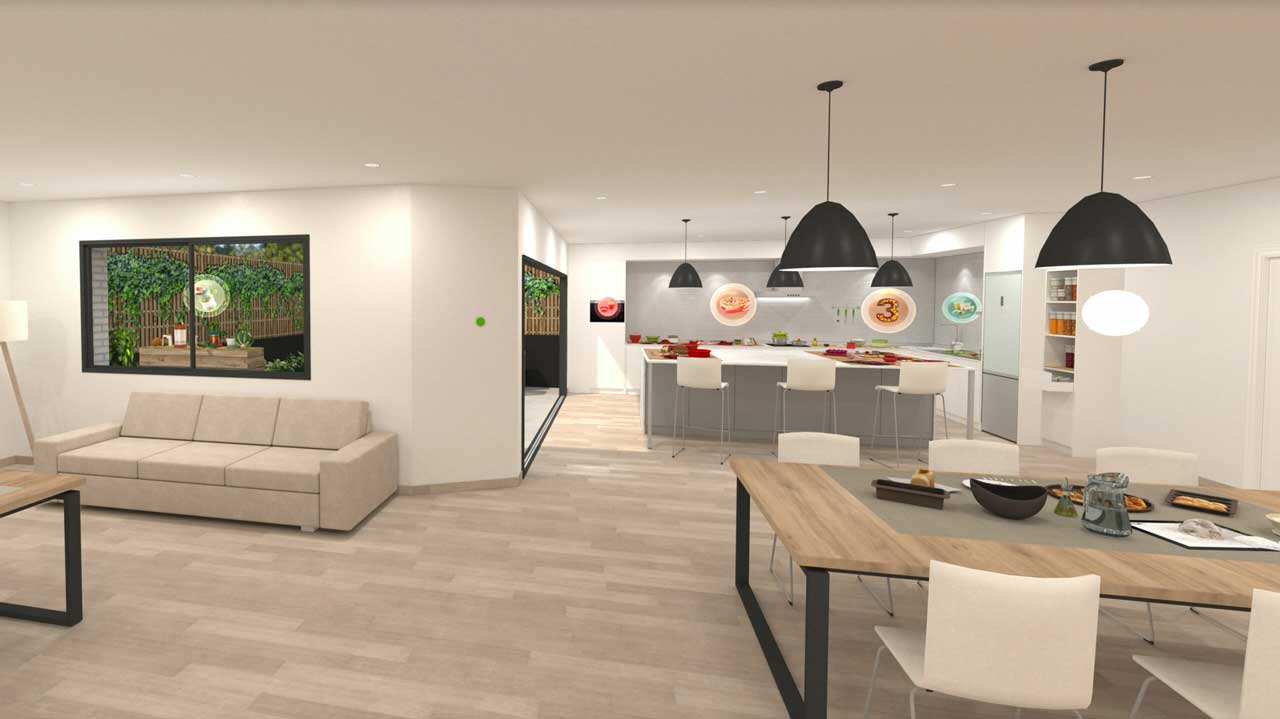
Interactive virtual house developed by Lèkuè
4. Entertainment applications
Virtual Reality represents a before and after in the way in which we consume multimedia content, where the immersion in the action makes the fourth wall disappear to immerse us inside the entertainment universe. A change that is also made possible by the involvement of our whole body, movements and senses beyond the audiovisual sector, with the incorporation of the multisensory masks that activate the sense of smell or haptic suits that bring the sense of touch to virtual entertainment.
New sci-fi-like devices that make the experience much more real, allowing you to create new and amazing adventures. As in The Twists and Turns of Lifethe audiovisual production of VidaCaixa and Movistar Plus + which became the first Spanish filming in the Metaverse by transferring Carmina Barrios, Henar Álvarez and the whole 3D neighborhood to the virtual world. In addition, viewers can join the experience and enjoy exclusive content and challenges through their own virtual glasses.
Virtual Reality filming for "Las Vueltas que da la Vida" by VidaCaixa and Movistar Plus
5. Marketing and advertising applications
With the incorporation of Virtual Reality and the rest of the Extended Reality technologies into the marketing strategiesnew ways of reaching consumers and target audiences are emerging. These technological solutions immerse users/customers in new interactive experiencesthat revalue the brand positioning and loyaltyof the users. Creating more creative, immersive, unique and innovative campaigns. Among the applications we find the celebration of virtual events, showrooms in unique three-dimensional spaces built under the essence of the brands or product presentations in which the interaction and gamification provide a differential value over the competition. Virtual experiences such as The Other Side of Halloween launched by Foster's Hollywood in which, thanks to this "terrifying" game, they managed to surprise their customers on Halloween night.
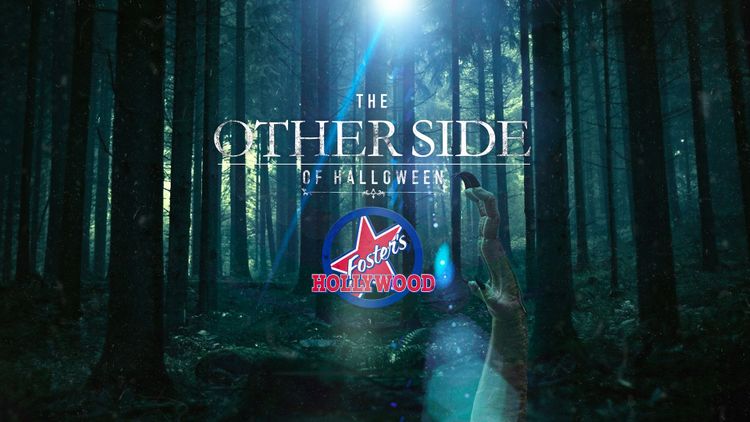
The Other Side of Halloween" Virtual Reality Project by Fosters Hollywood
6. Applications in the tourism sector
Virtual Reality opens up a new way to live immersive experiencesThis technology is a unique tool for the tourism sector as well. This technology is a unique tool for the destination promotion by being able to transport future interested tourists to the destination itself, surprising them and convincing them to visit the destination. Creating, in addition, complementary activities, both for the people who want to visit the destination and for the people who want to visit it. know different parts of the world without leaving home or for those who want to immerse themselves in their historical past. Being able to travel to other periods of the city or heritage, with freedom of movement and at their own pace, being the tourist the true protagonist of the experience.
Activities that also offer a great contribution to the museums, where Virtual Reality allows to recreate different environmentsThe new technology will allow users to visit museums from the exhibition hall itself or from their own homes. With this immersive technology, museums around the world will be within reach of users simply by using Virtual Reality glasses. An example of the differential contribution of the Virtual Reality to the tourism sector can be found in the virtual skiing experience developed in conjunction with Ibercaja, Frozenfor the presentation of the season of the great winter sport of the Aragonese Pyrenees.
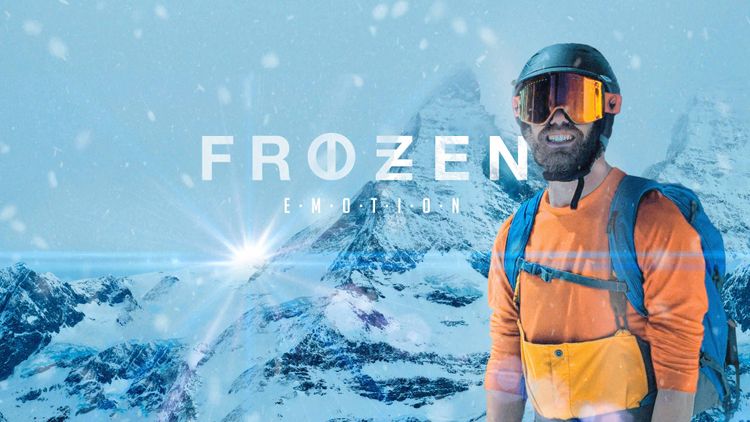
Virtual Reality Project for the tourism sector "Frozen" of Ibercaja
7. Applications in the health sector
In a sector where the training and actual experience are two key factors for a good job performance, Virtual Reality offers the healthcare world a unique space to perform simulations and other critical situations in safe and controlled environments. With recreations that do not affect the real world and in which it is not necessary to use real patients. A unique opportunity not only to train future healthcare professionals, but also to plan and perfect surgical procedures by trying out the different courses of action.
In addition, Virtual Reality offers a new form of entertainment within healthcare centers, by being able to transport patients to other virtual worlds, places that can even be personalized according to the age and treatment of the patients, all to make their hospital stay more bearable. Among the virtual experiences that have already been implemented, we find the simulation developed by Boehringer Ingelheimin which, within a virtual labIn this way, healthcare workers can immerse themselves in the process of preparing their latest intravenous medication, thus practicing its correct use without wasting training material.
Simulation developed by Boehringer Ingelheim within a virtual laboratory.
8. Architectural applications
Architecture is undoubtedly one of the sectors with the highest number of growth opportunities is in this new digital dimension. The move of users and companies to the Metaverse implies a new line of business for architectural firms, with the launch of 3D construction projects exclusively for the virtual world. In addition, Virtual Reality technologies are also becoming new innovative tools for traditional architecture, from design to project closure. By constructing future buildings, houses and infrastructures in their virtual version reducing, thanks to these 3D simulations, possible calculation errors.
Also, the different phases of validation of layout, design and decoration are streamlined. At the same time, communication and collaboration with customers becomes much more fluid, and can preview from the beginning and in the first person the final result of the project with all its architectural details.
Advantages of Virtual Reality
Virtual Reality has emerged as a fascinating technology that is transforming the way we interact with the digital world and with brands. Through the creation of immersive virtual environments, this innovative technology allows us to immerse ourselves in entirely new and exciting experiences. In this context, it is essential to understand the advantages that Virtual Reality offers in various fields, since its impact, as we have seen, ranges from entertainment or education to medicine and more sectors.
Let's get to know the advantages of Virtual Reality and how they are changing the way we experience and learn in an ever-evolving digital world.
More humanized interactions
Virtual Reality not only allows recreate real spaces in the digital universe with the highest level of detail. It also allows transferring our social interactions to the virtual world in a much more natural way. Thanks to the latest advances in avatar customization and multiplayer experiences Virtual Reality makes it possible to bring together hundreds of people in the same space, have first-person conversations and share much more information through gestures than just virtual reality. non-verbal communication is able to transmit.
Total immersion
When we put on the Virtual Reality glasses we focus all our senses and attention The new space is a stimulus that favors the concentration and total immersion of the users. This is a great advantage not only for learning, with more effective and efficient training activities, but also for the users. more experiential marketing actions brands, in which users are immersed in the company's message without distractions.
New forms of differentiation
The entry of Virtual Reality into the business activity represents a great opportunity for differentiation for the companies, thanks to the design and development of customized spaces that reflect the essence of the products and the brand itself. Thus converting the company's presence in the virtual world into one of the most important key points of branding and brand positioning.
Improvement of learning techniques
Virtual Reality is a major revolution for the future of education and training. This technology allows the educational experience to be more autonomous and active by users, facilitating the development of key skills with more engaging, enjoyable and immersive training. This e-learning also provides a great opportunity to increase learners' skills in mechanical processesof emergencies and in medical proceduresby making it possible to learn from mistakes without the mistakes having real consequences.
Freedom of movement
Undoubtedly, one of the great technological advances that characterize Virtual Reality devices is the freedom of action that they offer to the users, since none of the movements are predefined. The users themselves are the ones who jump, turn and walk through the virtual world. Giving us the possibility to move through space in a more intuitive and natural way. In Virtual Reality it is we ourselves who decide where to focus our attention within the space.
The future of Virtual Reality
The future of Virtual Reality looks promising and full of exciting possibilities. As technology continues to advance, we can expect significant breakthroughs that will further expand the frontiers of this innovative form of interaction.
One of the key trends in the future of Virtual Reality is the constant improvement of the visual quality and resolution of the devices. As Virtual Reality displays evolve, we will see sharper images, more vibrant colors and greater visual fidelity that will allow for an even more immersive and realistic experience.
Another highlight is the development of more compact and lighter deviceswhich will make Virtual Reality more accessible and comfortable. In addition, a greater focus is expected on the integration of haptic technologies, which allow touch to be felt and experienced in virtual environments. This will open up new possibilities in terms of interaction with virtual objects and the feeling of immersion in the virtual world.
In addition, Virtual Reality will also be integrated with other emerging technologiesThe company is using the latest technologies, such as Artificial Intelligence and Augmented Reality, to create even more amazing experiences and merge the digital world with the real world.
The future of Virtual Reality is shaping up to be an exciting journey towards total immersion and expanding applications in diverse fields. With continued technological advances and increased adoption, Virtual Reality will continue to surprise us and transform the way we live, learn, entertain and work.
Virtual Reality Projects with Imascono
The projects of Virtual Reality are playing an increasingly important role in our society and in the engagement with companies, revolutionizing the way we interact with the digital world and opening up a range of creative and innovative possibilities.
In short, Virtual Reality experiences are a window to a world of infinite possibilities. These projects transport us to virtual environments that challenge the limits of imagination, offering immersive and transformative experiences in a variety of fields. From entertainment to education, Virtual Reality is driving innovation and changing the way we interact with the digital world.

